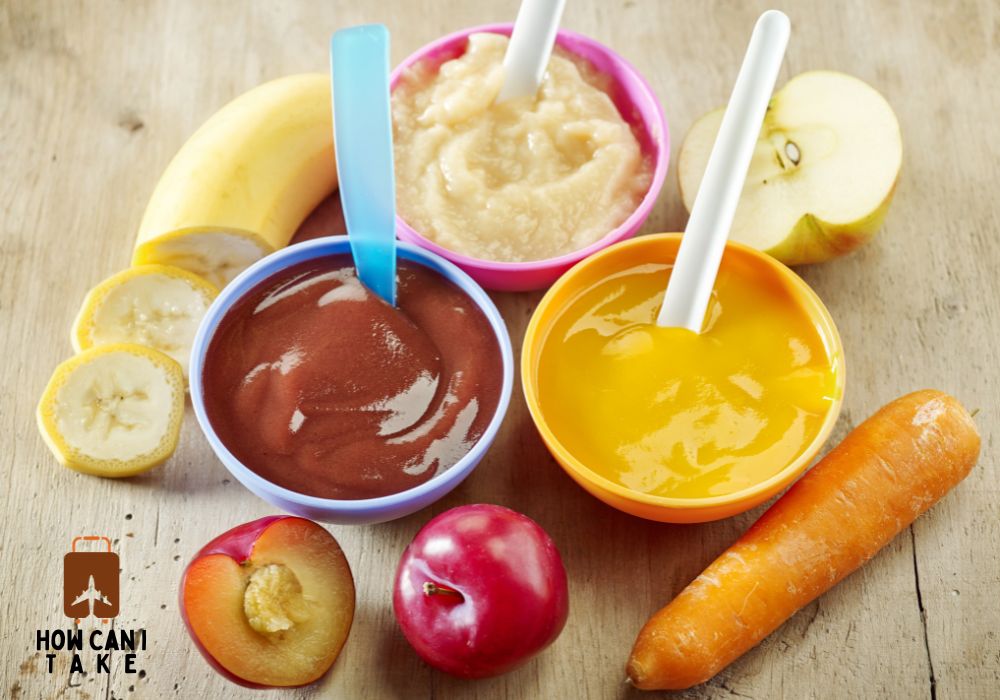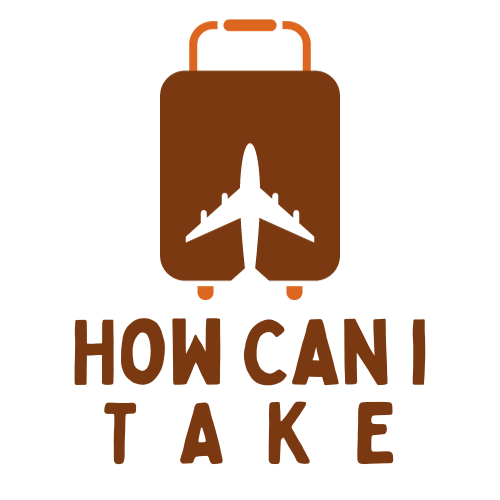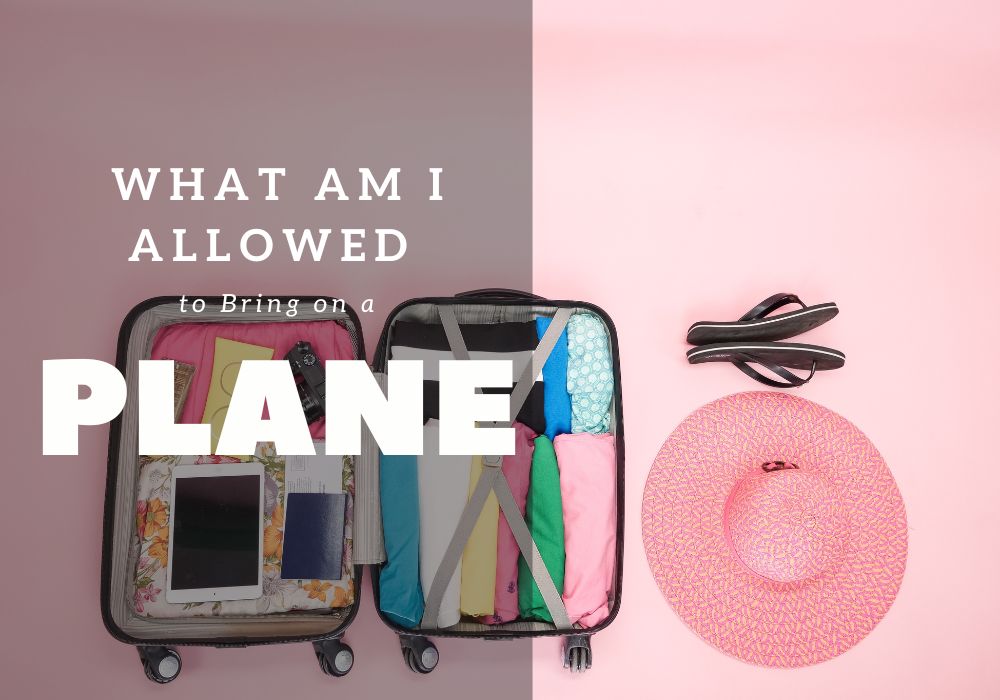Are you planning a trip and wondering what items you can bring on a plane? Understanding airline carry-on rules is essential for a smooth journey. Different airlines have their own regulations, and it’s important to know the general guidelines. In this blog What Am I Allowed to Bring on a Plane? we’ll cover everything you need to know about size and weight restrictions for carry-ons, items permitted in your carry-on, prohibited items, and preparing your bag for TSA inspection.
We’ll also share tips on how to make your journey smoother with the right packing. So before you pack your bags, read on to ensure you’re well-prepared for a hassle-free travel experience.
Table of Contents
Understanding Airline Carry-On Rules

Different airlines have their own rules when it comes to carry-on luggage. It is essential to familiarize yourself with the specific regulations of the airline you are flying with. This includes understanding the size, weight, and item restrictions imposed by the airline. By knowing these rules in advance, you can pack efficiently and avoid any surprises during the security screening process at the airport. It is also crucial to stay updated on the latest updates to airline carry-on rules to ensure a smooth travel experience. Remember, each airline may have its own set of guidelines, so it’s important to be informed.
Importance of Knowing Carry-on Luggage Rules
Common Regulations Across Airlines
While carry-on rules may vary, most airlines follow some common regulations. Liquids, gels, and aerosols must be in containers of 3.4 ounces or less, and all containers have to fit into a single, quart-sized, clear plastic bag. Sharp objects, firearms, and explosives are strictly prohibited in carry-on luggage. Additionally, passengers are usually allowed to bring one personal item, such as a small backpack or purse, in addition to their carry-on bag.
To ensure compliance, it’s always a good idea to check the specific rules of the airline you are flying with. By understanding these common regulations, you can have a smoother and hassle-free travel experience.
Size and Weight Restrictions for Carry-Ons
General Size and Weight Guidelines
Most airlines have a carry-on luggage size limit of approximately 22 inches in length, 14 inches in width, and 9 inches in depth. Weight restrictions for carry-on luggage typically range from 15 to 25 pounds. It’s important to note that these are general guidelines and specific rules may vary among different airlines. To ensure that your carry-on luggage fits in the overhead bins or under the seat in front of you, always check the airline’s website or contact customer service for the most accurate and up-to-date information on carry-on size and weight restrictions. Adhering to these guidelines will help you have a smoother travel experience.
Variations Among Different Airlines
Carry-on rules can vary significantly among different airlines, despite general size and weight guidelines. Some airlines may have more lenient rules, allowing slightly larger or heavier carry-on luggage. Conversely, low-cost carriers often enforce stricter rules to maximize passenger capacity. To avoid any issues, always check the specific rules of the airline you are flying with to ensure compliance.
Failure to adhere to carry-on rules can result in additional fees or the need to check in your bag. It’s wise to familiarize yourself with the regulations of the airline you are traveling with to make your journey more efficient and hassle-free.
Items Permitted in Your Carry-On
When it comes to items permitted in your carry-on luggage on an airplane, there are certain guidelines to keep in mind. Here are some important items that are allowed in your carry-on:
By following these guidelines, you can have a smooth and stress-free travel experience today.
Essentials Like Medicines and Baby Food

When it comes to essential items like medicines and baby food, there are specific guidelines for what you can bring on a plane. Medications, both prescription and over-the-counter drugs, are allowed in your carry-on luggage. Similarly, baby food, baby formula, breast milk, and other necessary liquids are permitted in reasonable quantities, typically in containers of 3.4 ounces or less.
These items are exempt from the liquid restrictions imposed by TSA security, but you may be required to separate them from the rest of your carry-on during the screening process. It’s always a good idea to carry documentation, such as prescriptions, to avoid any potential issues at the airport. Be sure to check with your airline for specific rules and regulations regarding essential items in your carry-on luggage.
Personal Items and Snacks
When it comes to personal items and snacks, there are certain guidelines you need to follow for carry-on luggage. Personal items like phones, laptops, tablets, and personal care items are generally allowed in your carry-on bags. As for snacks, it’s important to choose items that are not liquid or gel-based to comply with the liquid restrictions imposed by the TSA security. To make the security screening process more efficient, it’s a good idea to pack snacks in separate containers.
Remember to pack your personal items in an easily accessible manner to facilitate the security screening process. Always check the airline’s rules to ensure compliance with specific regulations regarding personal items and snacks in carry-on luggage.
Specific Equipment and Accessories
When it comes to specific equipment and accessories, it’s important to be aware of the regulations set by the airline. While some items are allowed in carry-on luggage, others may not be permitted. Portable chargers, disposable razors, nail clippers, and small backpacks are generally allowed. However, items like box cutters, baseball bats, golf clubs, pepper spray, and liquids in containers larger than 3.4 ounces are usually not allowed. It’s always a good idea to double-check the airline’s rules to ensure compliance with specific regulations.
By knowing what is allowed in advance, you can pack the necessary items in your carry-on and avoid the need for additional luggage.
Prohibited Items in Your Carry-On
When preparing for air travel, it’s important to be aware of the prohibited items in your carry-on luggage. For the safety of all passengers, weapons and hazardous materials are strictly forbidden in the cabin. Additionally, large containers and loose objects are not allowed to be brought onboard. To avoid any issues at security, make sure to review the full list of prohibited items before your journey. It’s crucial to avoid carrying anything that may be considered dangerous or pose a security risk. Familiarize yourself with the specific rules and regulations enforced by TSA security to ensure a smooth screening process.
Weapons and Hazardous Materials
Large Containers and Loose Objects
What Am I Allowed to Bring on a Plane?More specific

Preparing Your Carry-On for TSA Inspection
When preparing your carry-on for TSA inspection, it’s important to follow specific rules to ensure a smooth screening process at the airport security checkpoint. One key tip is to declare any necessary liquids, such as breast milk or baby food, to the TSA officer. This will help expedite the process and ensure compliance with the regulations.
Additionally, make sure to separate items that require additional screening, such as portable chargers or lithium batteries. Understanding the rules regarding alcoholic beverages in carry-on luggage is also crucial. Remember, the TSA may request further inspection of certain items, so be prepared to comply. By following these guidelines, you can streamline the screening process and ensure a stress-free travel experience today.
Declaring Items and Organizing Your Bag
To ensure a smooth TSA security checkpoint experience, it’s crucial to be familiar with the rules and regulations. Declare liquids like breast milk or baby food to the officer, and organize your bag efficiently. Separate valuable items in a separate bin. Adhering to TSA guidelines ensures compliance and helps expedite the screening process. Be prepared, as screening times can vary.
What Happens to Confiscated Items?
Confiscated items are disposed of to maintain airplane security. Specific rules are in place to prevent accidental discharge or security breaches. Airline approval is needed for items allowed in checked luggage but not the cabin. Take a survey on the airline’s website to understand specific rules. TSA makes final decisions.
How Can I Make My Journey Smoother with the Right Packing?

To make your journey smoother with the right packing, familiarize yourself with airline rules, especially for liquids and prohibited items. Consider your ticket type and pack accordingly. Follow specific guidelines for items like raw vegetables or sports equipment. Be prepared for additional screening if necessary.
Frequently Asked Questions
What items are not allowed in flight?
Items prohibited on flights include explosives, flammable substances, and sharp objects. Liquids over 3.4 ounces are not allowed in carry-on luggage but can be packed in checked bags. Certain items like firearms, electronics, and foods may have specific regulations. Check the TSA website for a comprehensive list.
Can I bring a purse and a carry-on on a plane?
Yes, most airlines allow passengers to bring a purse and a carry-on bag. However, the size and weight of the bags may be restricted by the airline’s policies. It is important to check with your specific airline for their regulations on baggage. Additionally, certain items may not be allowed in carry-on bags and must be packed in checked luggage.
What unexpected items can you pack in a carry-on?
Some surprising items that you can pack in your carry-on include food, medication, and electronics. Certain airlines may also allow small musical instruments or sports equipment. Remember to check with your airline beforehand to confirm if these items are permitted. Be aware that weapons, flammable materials, and liquids over 3.4 ounces are not allowed in carry-ons.
What are the size and weight restrictions for carry-ons?
Size and weight restrictions for carry-on bags vary by airline. Generally, the maximum dimensions for a carry-on bag are 22 inches x 14 inches x 9 inches. The maximum weight is typically around 40 pounds or less. It’s important to check your airline’s specific restrictions.
What can you bring and not bring on a plane?
Liquids in containers that are 3.4 ounces or less and fit in a quart-sized bag are allowed. Prohibited items include firearms, sharp objects, explosives, and flammable items. Food items can be brought but may be subject to inspection. Check with the airline for specific restrictions on carry-on and checked baggage.
What’s the TSA liquid limit ? Can you bring food on a plane ?
The TSA liquid limit for carry-on containers is 3.4 ounces (100 milliliters) per container, all fitting in a quart-sized bag. Yes, you can bring food on a plane, although some items may require additional screening. Liquids, gels, and aerosols must adhere to the TSA liquid limit and be separated for inspection. Prohibited items include weapons, flammable materials, and certain chemicals.
Conclusion and final thoughts
In conclusion, it is crucial to familiarize yourself with the airline carry-on rules before you embark on your journey. Understanding the regulations and restrictions will help you avoid any unnecessary inconvenience or delays at the airport. Remember to adhere to the size and weight guidelines set by the airlines to ensure a hassle-free experience. Additionally, make sure to pack essential items such as medicines, personal items, and snacks in your carry-on bag. However, be mindful of prohibited items such as weapons and hazardous materials, as they are strictly forbidden.
Finally, prepare your carry-on for TSA inspection by declaring items and organizing your bag accordingly. By following these guidelines, you can make your journey smoother and more enjoyable. Safe travels!





Leave a Reply